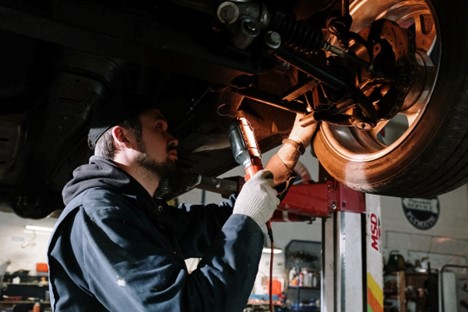The American Automotive Association (AAA) recommends saving $50 every month to cover routine maintenance and unexpected repairs. But this savings benchmark needs a makeover to reflect today’s prices. With the rising costs of parts and labor, it may not be enough to help you with an eventful year of repairs.
Table of Contents
Budgeting Basics: Expenses the Average Driver Can Expect
According to The Balance Money, the average car costs its owner about $6,354 per year, while the average pickup truck guzzles an average of $10,054. These figures reflect all the associated costs of driving, such as financing, fuel, insurance, and licensing.
How often you drive can significantly impact your expenses. According to the AAA’s 2020 Costs Breakdown, every mile you drive adds $0.09 in routine maintenance, repairs, and tires. That means someone who drives a short commute for work can expect to spend less than someone who spends hours in the car every day.
The spectrum of drivers and commutes is broad, yet the AAA has long since recommended all drivers save at least $50 every month to pay for routine maintenance and unexpected car trouble. That creates a $600 cash cushion for infrequent trips to the auto shop.
According to the AAA’s admission, some complicated repairs can exceed even their recommendation. Take, for example, how a new timing belt can cost you $1,000.
If you don’t have another emergency fund to handle surprise repairs, you might consider loans by phone to pick up the slack. If you go online using your smartphone, you’ll see that there are many different types of loans by phone available. It’s important you shop around to find one that works for you.
Why Should You Budget for More Savings?
Timing belts join other complicated repairs that have always been expensive. They don’t usually represent the average maintenance you need to do on a vehicle. But things are changing. Now, common repairs that were cheaper in the past demand more of your money.
The reasons? It’s complicated. Let’s break it down into two major categories:
1. The Economy
The auto industry is still recovering from labor shortages caused by the pandemic’s lockdown. Inflation has also caused the cost of almost everything to go up, including labor, overhead, and car parts. Mechanics can’t absorb these costs on their own, so the price you pay for your maintenance and repairs now reflects the changes in their expenses.
2. Your Driving
You may also require more maintenance if you’re driving more than the pandemic. Many people who were work-from-home warriors during lockdowns have returned to their daily commute, and each mile adds to wear and tear.
Unfortunately, driving your car too infrequently can also levy new costs to your budget. If you are one of the lucky people to remain working from home, your vehicle may not see the road as often as it should. Not driving your car enough can lead to battery issues, break problems, and rust.
The Takeaway:
Car repair joins the many services that cost more these days. To avoid a shock at the cash desk, prepare in advance in these price changes. Sit down with your budget and find a way to save more than the usual $50 per month. Any extra you manage to sock away can help you invest in routine maintenance and unexpected repairs without borrowing a loan by phone.








